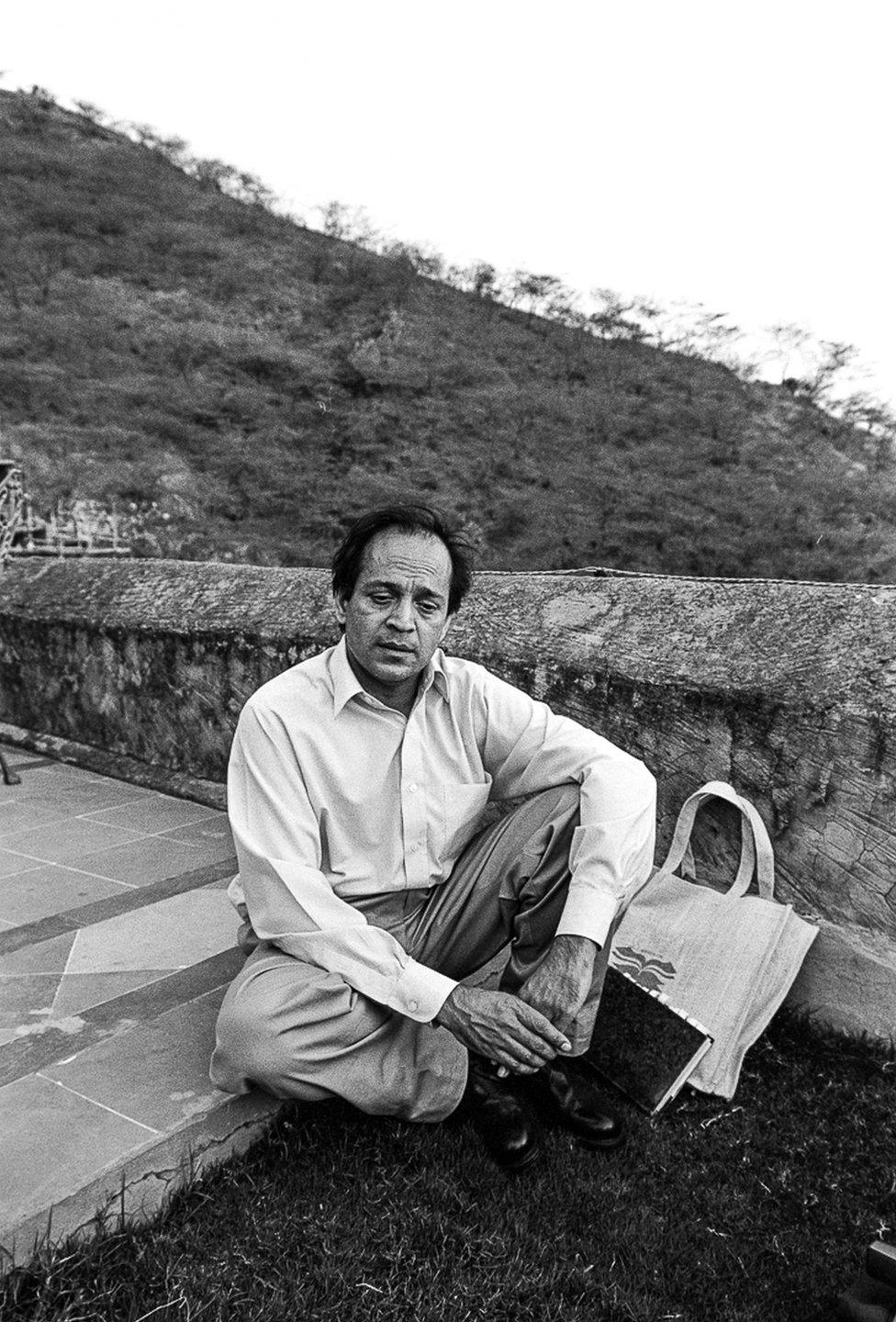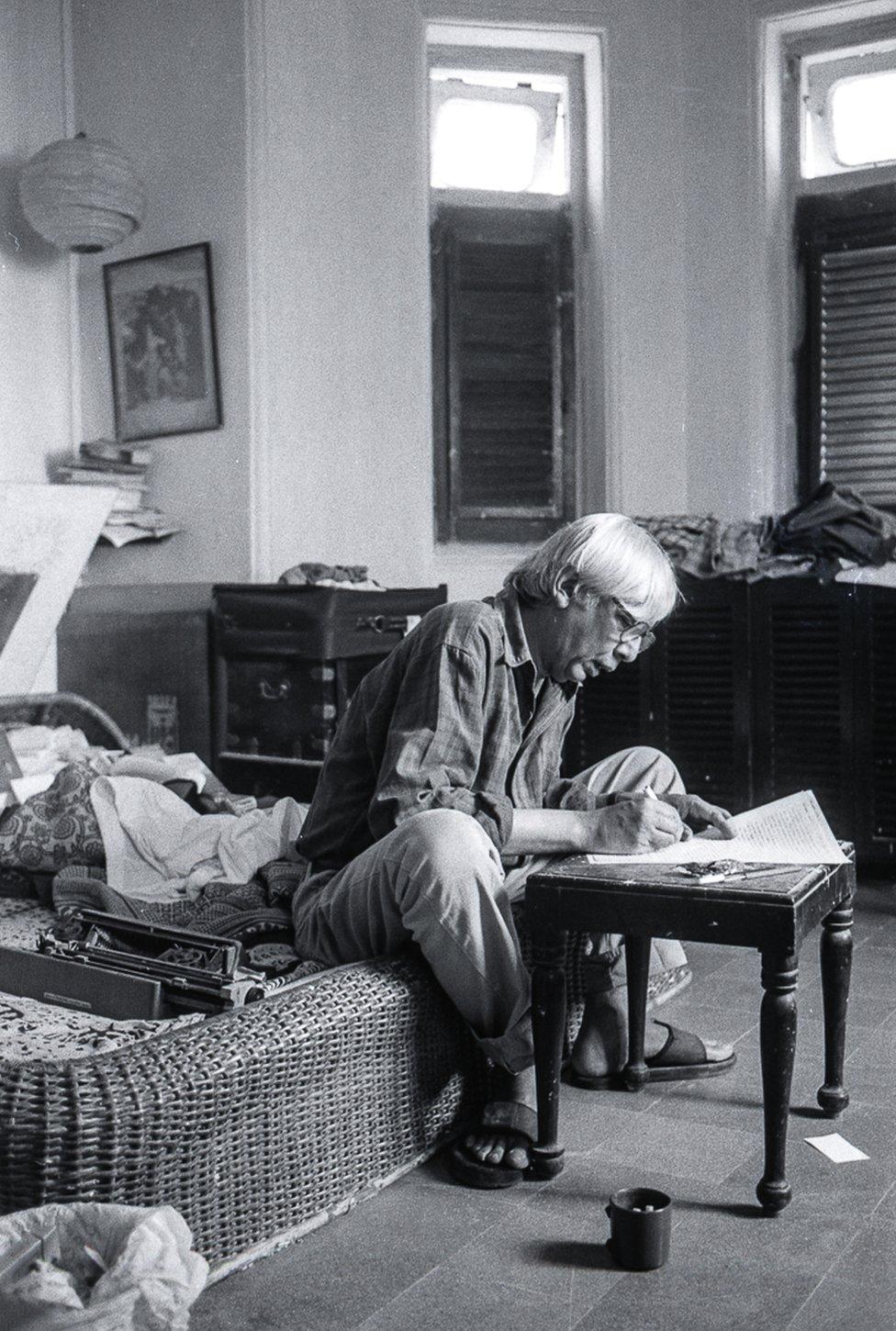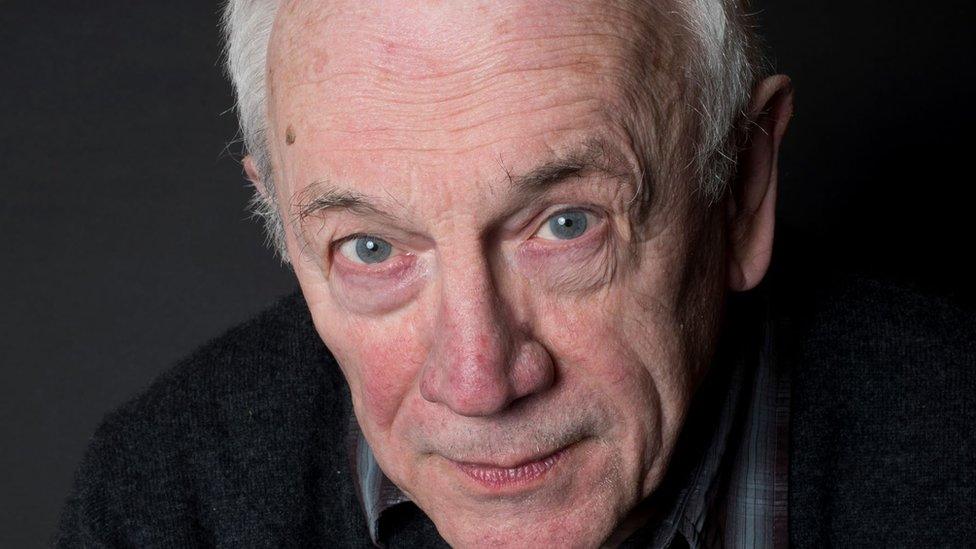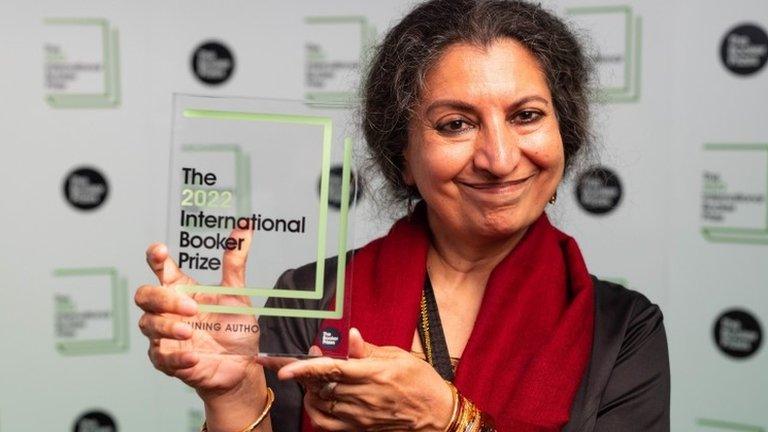Vikram Seth to Kamala Das: The dark, brooding world of Indian poets
- Published

Eunice de Souza was a 'one of a kind' poet

Holding a cigarette, a smiling Eunice de Souza stands in her nightgown, a parrot perched on her head.
This striking image greets you when you lay eyes on The Penguin Book of Indian Poets - a new anthology of Indian poets writing in English.
The almost 900-page book, edited by poet Jeet Thayil, was more than two decades in the making. It includes the work of 94 poets, ranging from global literary superstars to promising young writers.
"I wanted every interesting voice that I came across, old and new, to be a part of the book," Thayil says.
The book also contains evocative black and white photographs of some of the poets, taken by Madhu Kapparath.
Thayil and Kapparath spoke to the BBC about the work of five of the poets featured in the book - and the stories behind their photos.
The poet with an acerbic wit
Eunice de Souza (above) wrote pithy, tender poems about everything she saw, felt and thought about - from love to womanhood to the natural world to her Goan Catholic roots.
"As a poet she was one of a kind. The work is casual, crafted, anthemic, conversational, sarcastic, tender, funny - all at the same time," Thayil says.
And the way she lived her life was equally inspiring.
"She was so intelligent and she lived alone, with her pet parrots and dogs keeping her company," Kapparath says. "I think you feel things very strongly when you live alone and don't have loved ones to cushion you."
On the day he took the photo, she had gone into the kitchen to make tea.
"We just hung out in her kitchen; she was smoking a cigarette. Then one of her pet parrots flew above her and sat on her head. For some reason, her parrots were always trying to sit on her head when they weren't fighting with her dogs."
The man who can make the phone book rhyme

Seth's photo, clicked at dusk, shows him sitting on the terrace of the Neemrana Fort

Vikram Seth's books, especially A Suitable Boy, have fans around the world, but he also changed Indian writing in English with The Golden Gate, a novel written entirely in rhythmic sonnets.
"He could make a rhyming version of the phone book and it would be interesting," Thayil says.
"He has a scholarly appreciation of the history of English poetry. You see it in every sonnet and [four-line verses known as a] quatrain. There's seriousness, but he also brings a lightness of touch that makes for delight."
Kapparath clicked Seth's photo at a literary festival in Jaipur, in Rajasthan state.
"He was just sitting there, on the ground. It was dusk by then. We made small talk about the relative scale of a backdrop, and in a larger context, about events that play out in the shadow of a backdrop," Kapparath says.
The poet who explored disturbing realities with clarity

Jussawalla's poetry has a savage brilliance that unsettles

Adil Jussawalla wrote in jagged, fragmented lines about class wars, moral corruption and the contradictions that dehumanise and ravage the human spirit.
Kapparath clicked his photo during an afternoon at Jussawalla's place in Mumbai.
"Adil has this shy quality about him. He's pulled by a certain kind of reticence within his own self which I guess comes from contemplation. He was a bit reluctant to have his photo taken - wondering why anyone would want to take a picture of him without his shirt!"
The poet of in-betweens

There is a sense of loss and absence in Moraes's poems

Dom Moraes is a seminal figure in Indian English literature and poetry. His work spans poetry, newspaper columns, numerous books and translations.
His style was heavily influenced by Western poets, but what he wrote about always felt close to home.
"Dom was generous to a fault with other writers," Thayil says. "He knew exactly what it meant to a younger writer to be seen by an admired older writer."
About this photograph, Kapparath says: "He was in a tearing rush to finish a column when I entered the room. He was living in a friend's house at the time. The thing about Dom was he was never at home; he was always in some temporary abode somewhere."
The poet who bared her soul

Das wrote about her life with a fierce honesty

Though Kamala Das published six books of poems, "she was best known for a racy autobiography, My Story (1976), and an eventful life that included a period in politics and a late conversion to Islam", Thayil writes.
Das is often called a 'confessional poet' because of the fierce honesty with which she wrote about her life, womanhood, menstruation, sex, sexuality and infidelity, at a time when it was unthinkable to do so.
"It's only when we see her entire body of work that we realise how brave she was. She was writing poems in the 60s and 70s that poets today would think twice about," Thayil says.
"I took this photograph at her house in Kerala, just after she had converted to Islam," Kapparath says.
"She was living by herself and had been painting very intensely. We were talking and she said something about mourning for her companions. She just stood there in the gallery in this pose and said 'This is what I do; I mourn. I mourn for them all.'"

Read more India stories from the BBC:

- Published6 September 2022

- Published27 May 2022
